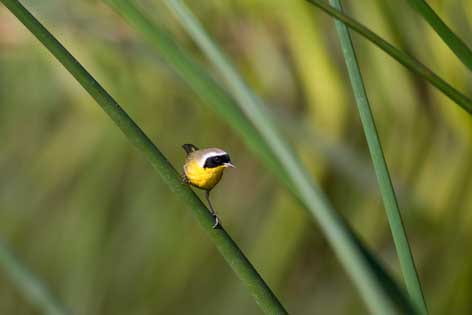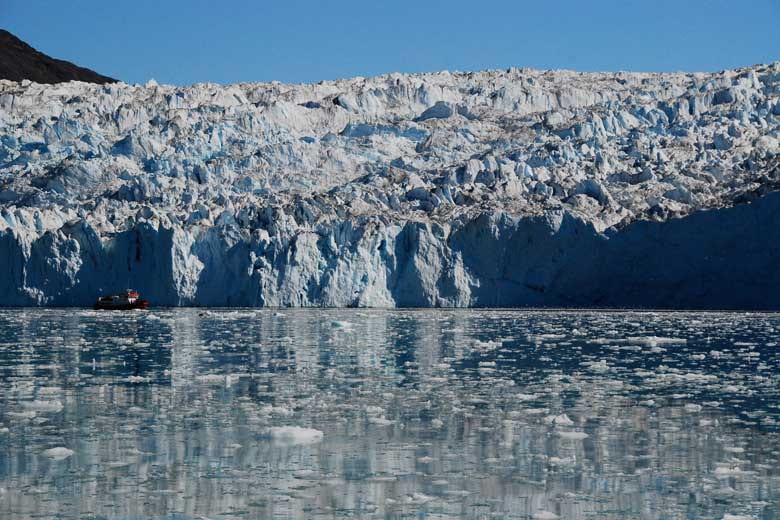Nature's steward

On this bright December morning, rolling along an earthen dike, he encounters a flock of Canada geese that decide, en masse, to seek a quieter pond, as well as a lone coyote too busy scaring up lunch to either notice him or care.
“I love it out here — I’ve always enjoyed being on the fringe of civilization,” says Bretz, whose job as marsh manager makes him as close to a modern-day Thoreau as possible in urban Orange County.
Adjacent to UC Irvine, the 202-acre reserve is one of the last remaining freshwater wetlands in Southern California. More than 200 bird species have been sighted in its marshes, ponds and channels, including the endangered light-footed clapper rail and California least tern.
Bretz helps UCI maintain the area, one of 36 sites in the University of California Natural Reserve System (UCI also manages the Burns Piñon Ridge Reserve on the western edge of the Mojave Desert).
“The reserve system is an interesting component of the university. It’s like an independent campus,” Bretz says. “UC purchased the marsh from the Irvine Company 40 years ago because it wanted a variety of ecosystems in the network, and these are prime wetlands. The idea was to have a major site next to each campus for students to study. It’s a vision of research and teaching.”
The marsh’s autonomy suits Bretz; with his brown felt hat and white beard, he’s more Grizzly Adams than university administrator. After nearly 30 years at the reserve, he’s attuned to its rhythms — the depletion and replenishment of the ponds, the coming and going of migratory birds.
“The pintails showed up on Thanksgiving,” says Bretz, observing a group of ducks bobbing in the water. “I watch what’s going on.”
He even notes the tiny spiders, pill bugs and other isopods that inhabit cracks in the ground during the dry season.
“For a few months, you have a world populated by these small organisms,” he says, peering into a crevice.
Once brimming with water year-round, the reserve’s ponds shrink dramatically in summer and fall due primarily to drought, groundwater depletion and diversion of the water supply when the San Diego Creek was redirected via manmade channels in 1968. Bretz supplements rainfall and runoff by pumping water from the creek, though much of the land remains parched during this period.
Using a tractor, he mows down weeds before replenishing the ponds to keep the area from becoming clogged and stagnant — like a doctor tending to a patient’s ailing circulation. Filling the ponds with about a foot of water creates a refuge for migratory waterfowl and an ideal habitat for wading birds, such as the elegant great blue heron and snowy egret.
“People ask, ‘If this is a nature reserve, why are you doing all of this managing?'” Bretz says. “The answer is we’ve inherited a responsibility for migratory waterfowl that would disappear if we didn’t step in. This is the most intensely managed of the UC reserves because it’s embedded in urban surroundings.”
He tries to keep any necessary human activity from interfering with nature. Currently, a crew is removing 3,500 feet of old dirt roads, a disruptive project that Bretz favors because it will restore three more acres of habitat.
Far less intrusive are the marsh’s most frequent visitors: faculty and students who carefully conduct fieldwork in biology and other disciplines.
“UCI’s reserve is an important resource for the campus. I use it for teaching and research,” says Michael Goulden, associate professor of Earth system science. “The students see science in action and enjoy the field trips — except on the rare occasion that someone falls into a pond.”
Among the recent projects by Goulden, UCI Arboretum director Peter Bowler and other campus researchers: restoring the native coastal sage scrub, vital to the endangered California gnatcatcher and other bird species; tracking coyotes’ habitat use and movements; measuring the reserve’s production of methane and other gases to better understand global climate change; examining invasive plants that harm the ecosystem; and studying the Pacific pond turtle, a species threatened by disease and habitat destruction that has a healthy population of more than 200 at the marsh.
“We’ve had students catching turtles and fitting them with radio transmitters to trace their movements and see where they nest,” Bretz says. “This habitat has been shown to be good for them. That’s an important discovery, because it could ensure their future.”
He worries about what will happen to the marsh after he retires. Bretz is 66, and everything he knows about the place — including the complex maze of regulatory agencies that have jurisdiction over the reserve and its endangered species — is “up here,” he says, tapping his forehead.
“There’s no way to write a manual about this stuff,” Bretz says. “But I don’t have plans to retire. I like being out here contributing to the preservation of native organisms. They should have a chance to survive.”
Note: Research areas are closed to the public, but most of the marsh can be viewed from the hiking and horseback riding trails along the San Diego Creek levee and from the bicycle trail along University Drive.
Originally published in Zotzine Vol. 2, Iss. 5


